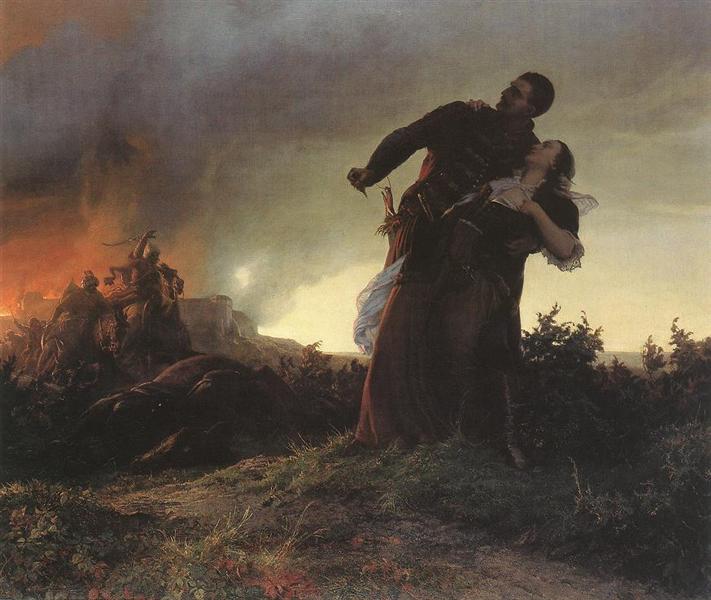Description
In the vast panorama of the European art of the nineteenth century, the painting "Mihály Dobozi and his wife - 1861" of the Hungarian artist Bertalan Székely stands out as a vibrant testimony of romantic nationalism that permeated much of the artistic production of the time. Bertalan Székely, born in 1835 and died in 1910, was an outstanding painter in the Hungarian National Renaissance, and his work often focused on historical and legendary issues of Hungary, full of a deep emotional burden and heroic dignity.
In "Mihály Dobozi and his wife - 1861", Székely presents us with a dramatic moment that, although deeply rooted in Hungarian history, is universal in its theme of sacrifice, love and tragedy. The scene captures Mihály Dobozi, a historical figure that fought in the battle against the Turks in the 16th century, in an instant of despair and heroism with his wife. The composition of the work is masterful, directed by courage and dedication, with a clear visual language that guides the viewer through an intense and moving narrative.
The paint is characterized by a high degree of detail and an impressive ability in color. Székely uses a palette rich in dark and terrible tones that dramatically contrast with the clearest tones of Dobozi and his wife, who are the undoubted focal points of the composition. This use of light and shadow contrast not only provides three -dimensional depth to the scene, but also amplifies the inherent drama of the portrayed moment. The expression of anguish in the face of both characters, along with the physical tension of their bodies, is captured with precision that evokes an immediate emotional response of the viewer.
The bottom of the work, with its minimalist but suggestive details, immerses us in a hostile and chaotic environment, probably a battlefield, which further reinforces the desperate context in which the protagonists are. However, it is the interaction between the characters that dominates the scene. Mihály Dobozi holding his wounded or deceased wife, is a powerful symbol of love and sacrifice, a narrative that Székely handles with palpable sensitivity and respect.
Bertalan Székely was a key figure in the Hungarian romantic movement, and his work reflects both his technical skills and his commitment to the history and culture of his country. Works such as "Mihály Dobozi and his wife - 1861" not only offer a window to the Hungarian historical past, but also raise broader questions about value, sacrifice and humanity.
Székely's painting aligns with the tradition of European historical romanticism, where the heroic individual and the emotional burden of historical events are valued. This particular work resonates deeply with the viewer, not only for its technical skill, but also for its ability to capture the essence of human sacrifice in a historical and emotional context.
In conclusion, "Mihály Dobozi and his wife - 1861" is a masterpiece that not only stands for her impeccable technique and his rich visual narrative, but also for her ability to bring to life the complexities of the Hungarian past. Bertalan Székely, through this painting, offers us a deep and emotional look at a crucial moment in history, while inviting us to reflect on universal issues that remain relevant today.
KUADROS ©, a famous paint on your wall.
Hand-made oil painting reproductions, with the quality of professional artists and the distinctive seal of KUADROS ©.
Art reproduction service with satisfaction guarantee. If you are not completely satisfied with the replica of your painting, we refund your money 100%.

